Well, it’s looking like our furniture and household goods won’t get here until mid-October at the earliest. So, onto more adventures!
One of the things about living in another country whose language is different is that you have to learn a lot of vocabulary. I’m fortunate in that I learned Spanish quite well when I lived here for 11 years before. But every now and again I encounter voids of vocabulary words and phrases that are revealed by my sudden necessity for these, and which allow me to therefore increase my fluency. This past week, for example, a sharp pain in my mouth presented me with an opportunity to expand my repertoire to include phrases such as canal radicular (root canal), corona dental (crown), dientes quebradizas (brittle teeth) and so on.
I was really frightened of going to the dentist—it frightens me in the US too, but even more so when I also don’t have the tools with which to express the matices, the subtleties, of what I want to say. But circumstances being what they are, I was forced to make an appointment.
The nice thing about Tres Cantos is that nothing is really that far away, and the super nice thing about where we live is that the dentist’s office is literally a four-minute walk from my front door. And I got really lucky—my new dentist is wonderful! We had a nice chat, she took some all-around X-rays and got to the root of the matter, pun intended, so wish me well with the endodontista tomorrow as we discuss the impending extracción and implante.
Meanwhile, let’s talk about my weekend jaunt into Madrid to explore the MADbird fair, (MAD being short for Madrid, haha!) The annual 3-day fair was about nature tourism throughout Spain showcased in a series of about 20 wooden stalls. Most had representatives from different provinces in Spain who highlighted why birding in their province was the coolest thing ever. They had detailed maps of where to go and brochures on lodgings and other fun outdoor activities. Soon, my husband and I were laden with pamphlets about places we can’t wait to explore!
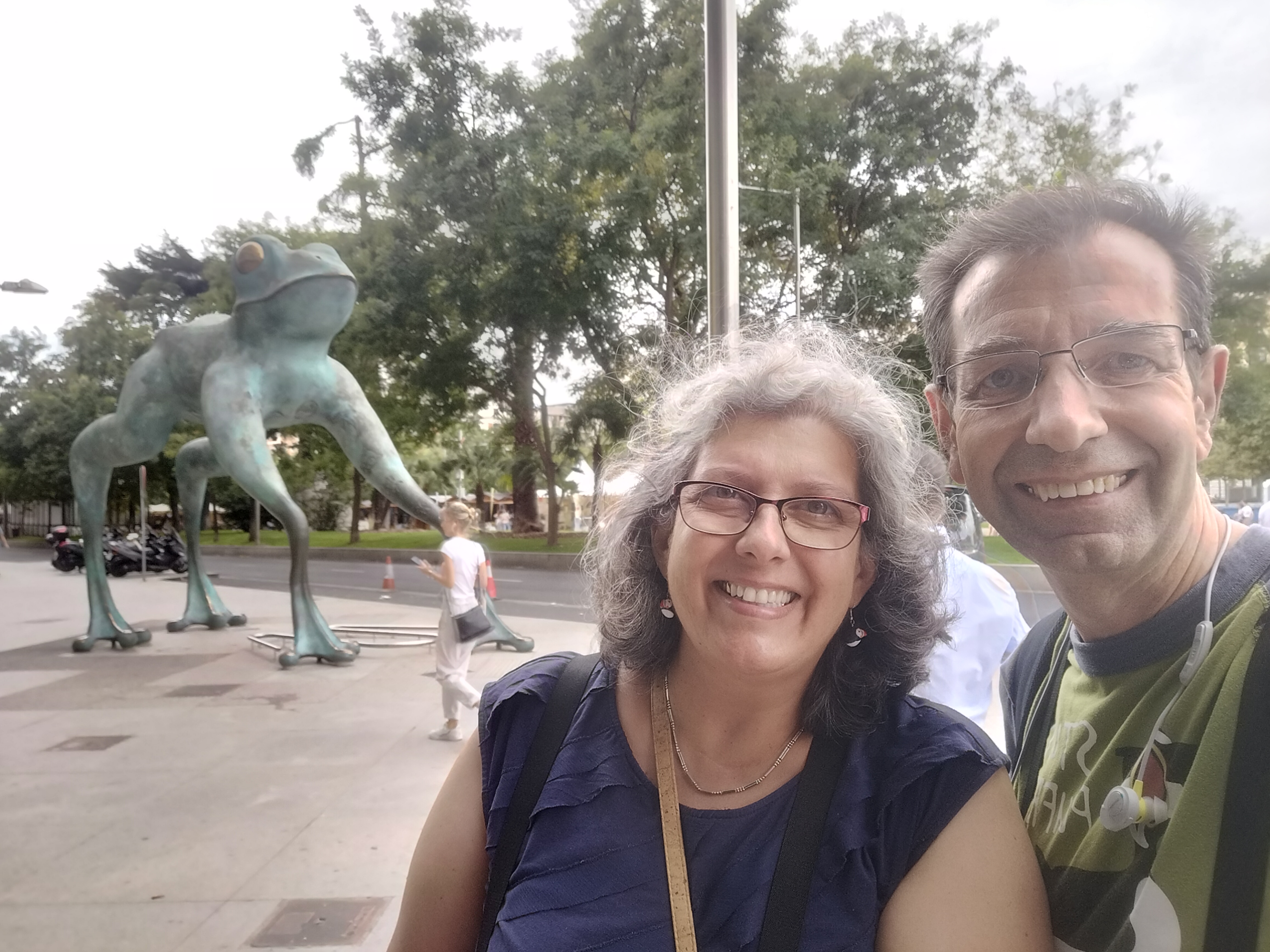
SEO, the Spanish Ornithological Society, (like the National Audubon Society and the American Birding Conservancy and the American Birding Association, all rolled into one) was one of the event sponsors, and they are the ones who sent us information about this fair. They also showcased pelagic (ocean) birds and told of their troubles as they get ensnared in fishing nets and get killed, thus raising the public’s awareness so that we can demand more safeguards. They had a wonderful photographic display of the beautiful birds that can be found on, or just off, the Spanish coasts.
There were also a few stands with bird and nature gifts, and we got some really cool bird mugs!
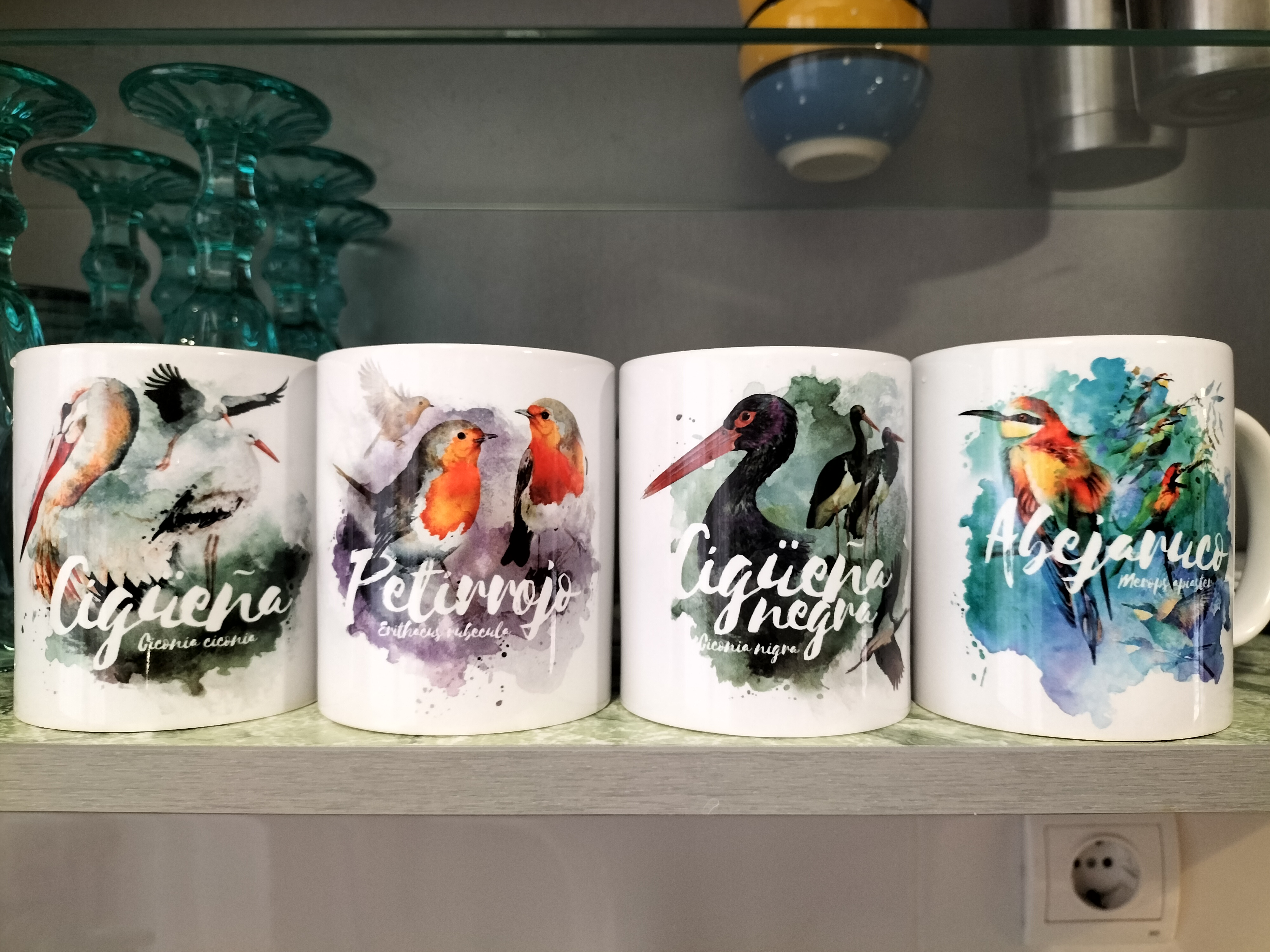
The MADbird fair was set up on a street called Paseo de Recoletos, just outside the National Library of Spain, a truly impressive building which we decided to explore. Guarding the entrance of the library are five humongous stone statues, each a literary (and literal) giant, many of whom are holding enormous books.

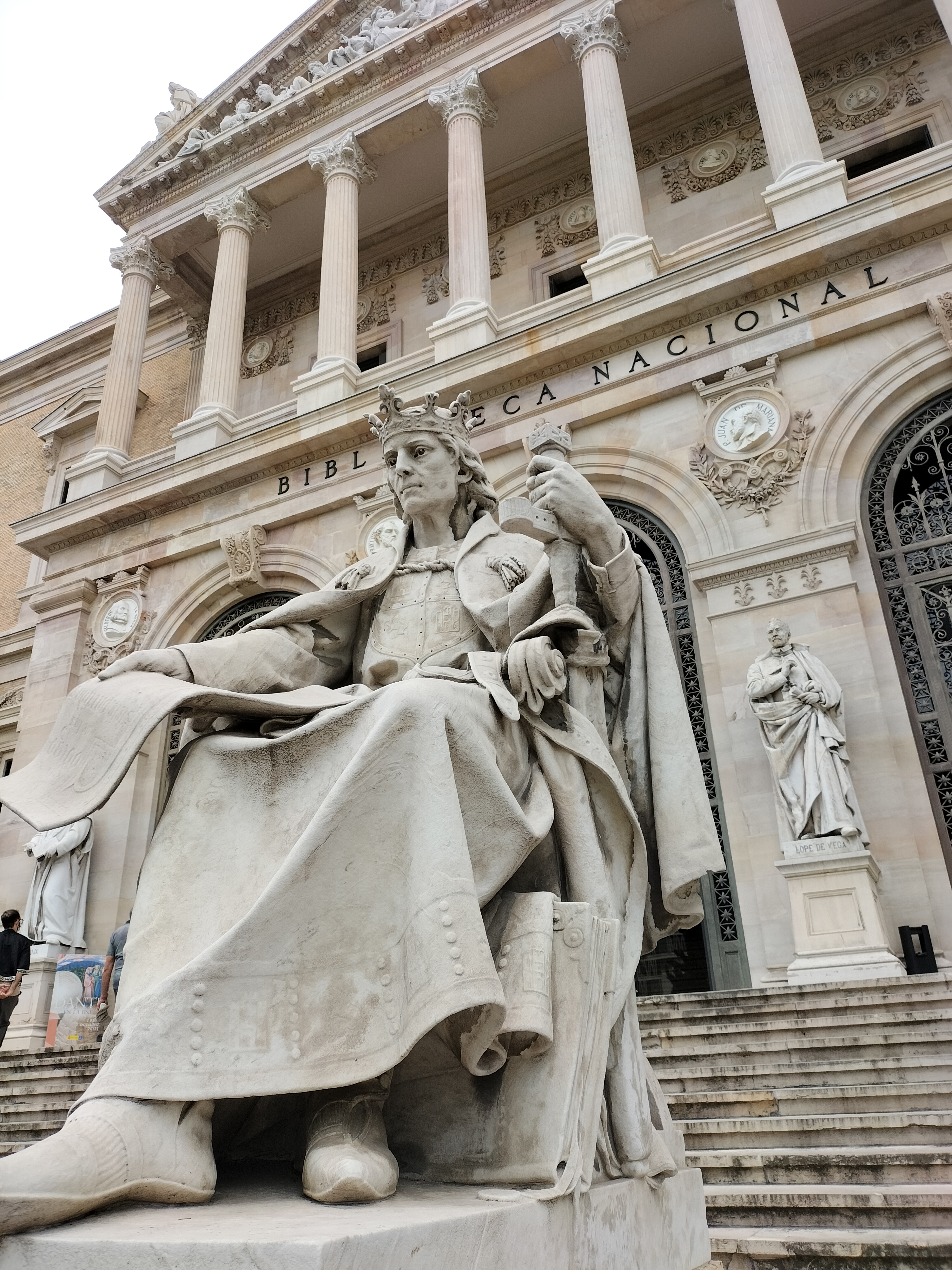
One of the five guardian dudes was none other than Miguel de Cervantes, dressed in his ruff and tights! Very cool.
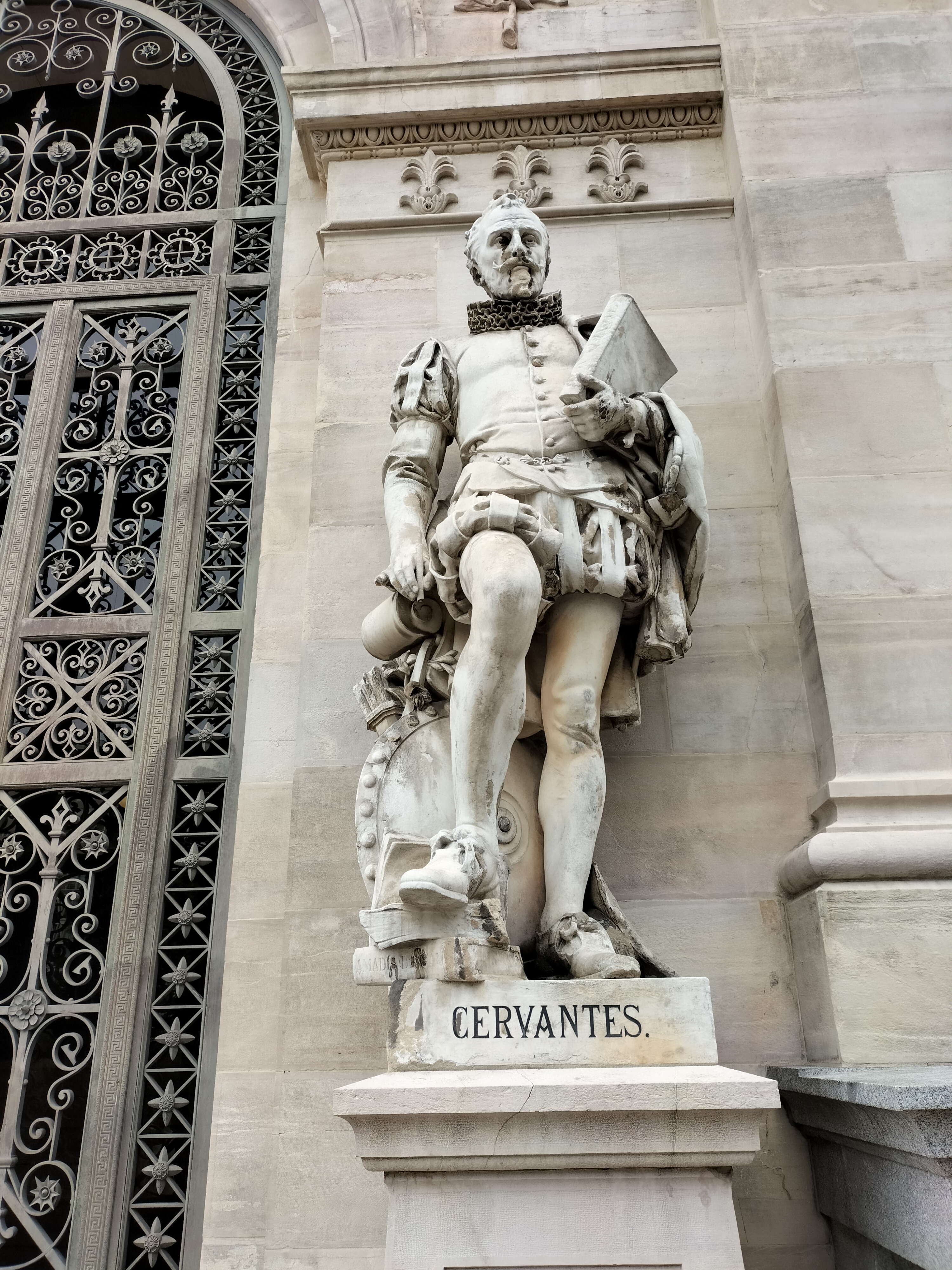
The statue of Lope de Vega, another hugely important Spanish author, stands in the center of the doorway, and I am going to have to learn who the other three people in the statues are.
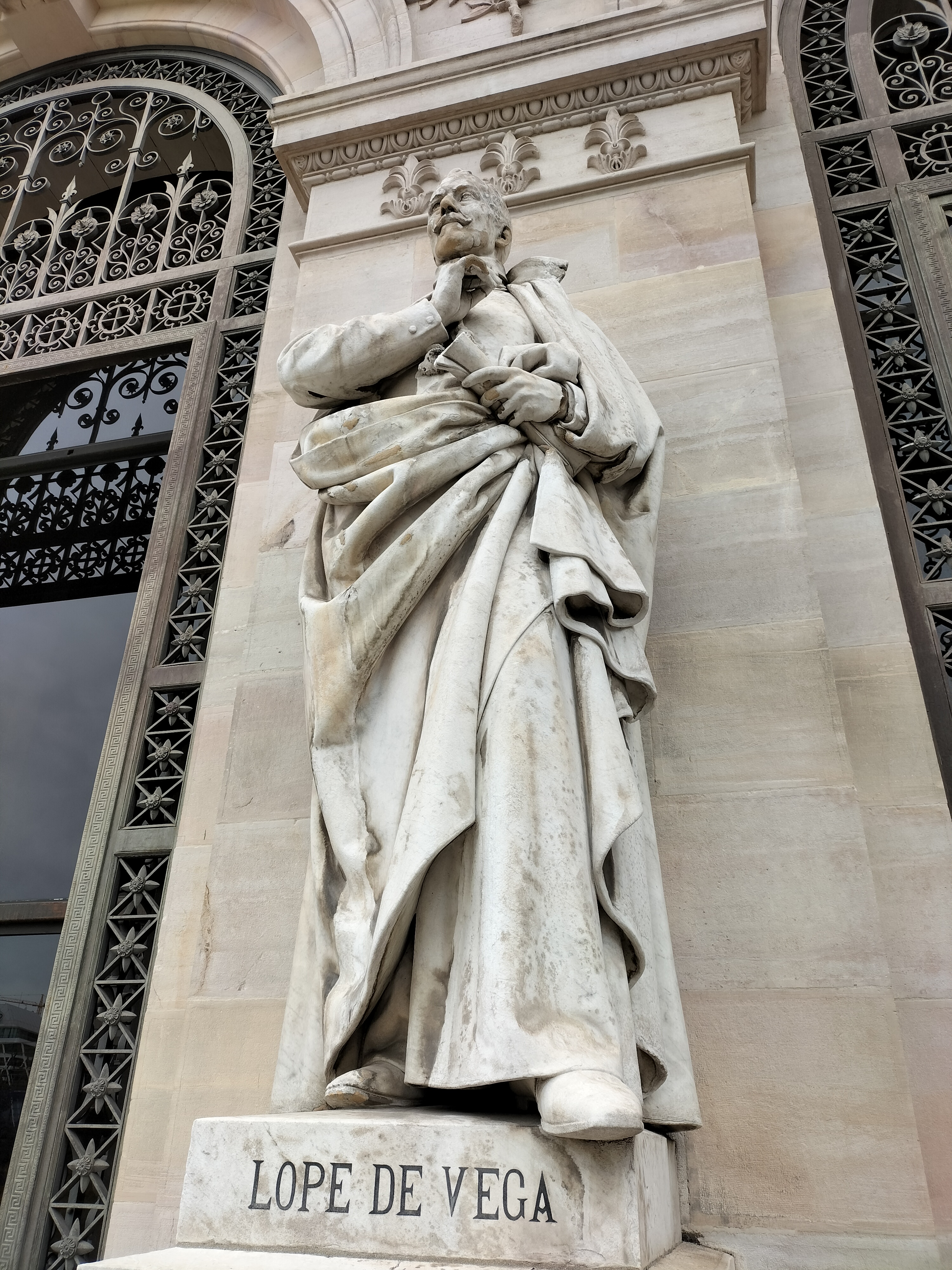
The Spanish National Library houses over 30 million texts, mostly from the 1700s on, but its collection also includes books from much earlier. Some of these rare and very old, hand-written and illustrated books, called incunables, are on display, in cases that are climate-controlled and tamper-resistant, and you can get quite close to admire them and stare in wonder. In the picture below is a tiny example. It’s about 2 inches wide and 3 inches tall, and its a book of poetry, written in the 1300s, and transcribed and illustrated in the 1400s, before Columbus discovered America.
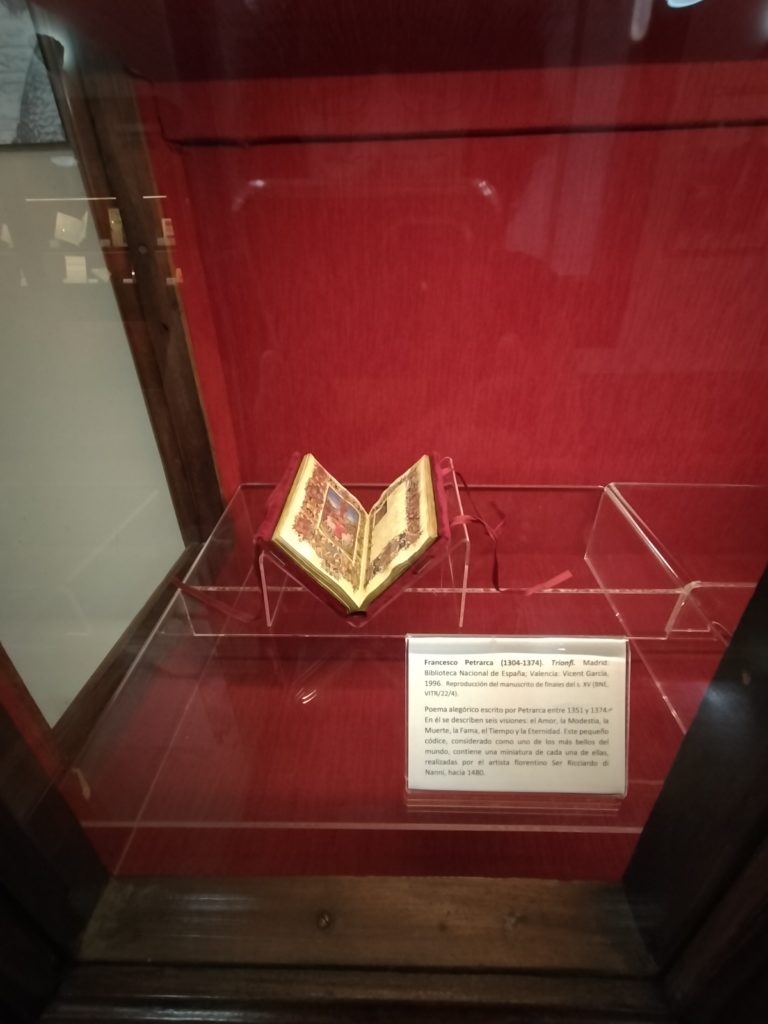


Hand-transcribed and drawn–isn’t that awe-inspiring?
And there is also a reproduction of a letter Cervantes wrote.

The library houses rotating exhibits focusing on different authors from around the world. The exhibit that just finished was on Emilia Pardo Bazan (1851-1921), a woman who wrote more than 500 stories, poems and novels in the late 1800s and early 1900s, many focusing on women’s rights and the societal problem of violence against women. She lived in and set most of her stories in Madrid. I had never heard of this literary giant, but I bought one of her books and so far, it’s very good.
The current exhibit is of Dante (1265-1321). In it I learned that, unlike other authors from his time-period, we do not have originals of his writings, but rather only copies and translations, made over the centuries, and stored in at least 19 different museums around the globe. The thing about Dante was that, living in Italy, he refused to write his later works in Latin which was the standard language for scholars at that time, and this made his contemporary intellects and the powers that be, very angry. At that time, Italy was not a united country (neither was Spain or Germany, for that matter) but rather a series of kingdoms, each with its own language. Dante was trying to reach the common people, (and he was involved in a lot of political uprisings to unite Italy, for which he was ultimately exiled) so he chose the language of one of the kingdoms to write in, and this later (and partly because of his writings) evolved into the main Italian language. But because of his struggles with the established rulers, he got in a lot of trouble and his works were destroyed and/or lost. Different researchers have made it their life’s work to try to read the earliest documented copies and translations of his writings to see if they can get as close as possible to what Dante’s original words and meanings were. Anyway, I’ve glossed over a fascinating history and hopefully this is enough to get you interested in learning more about this amazing writer.
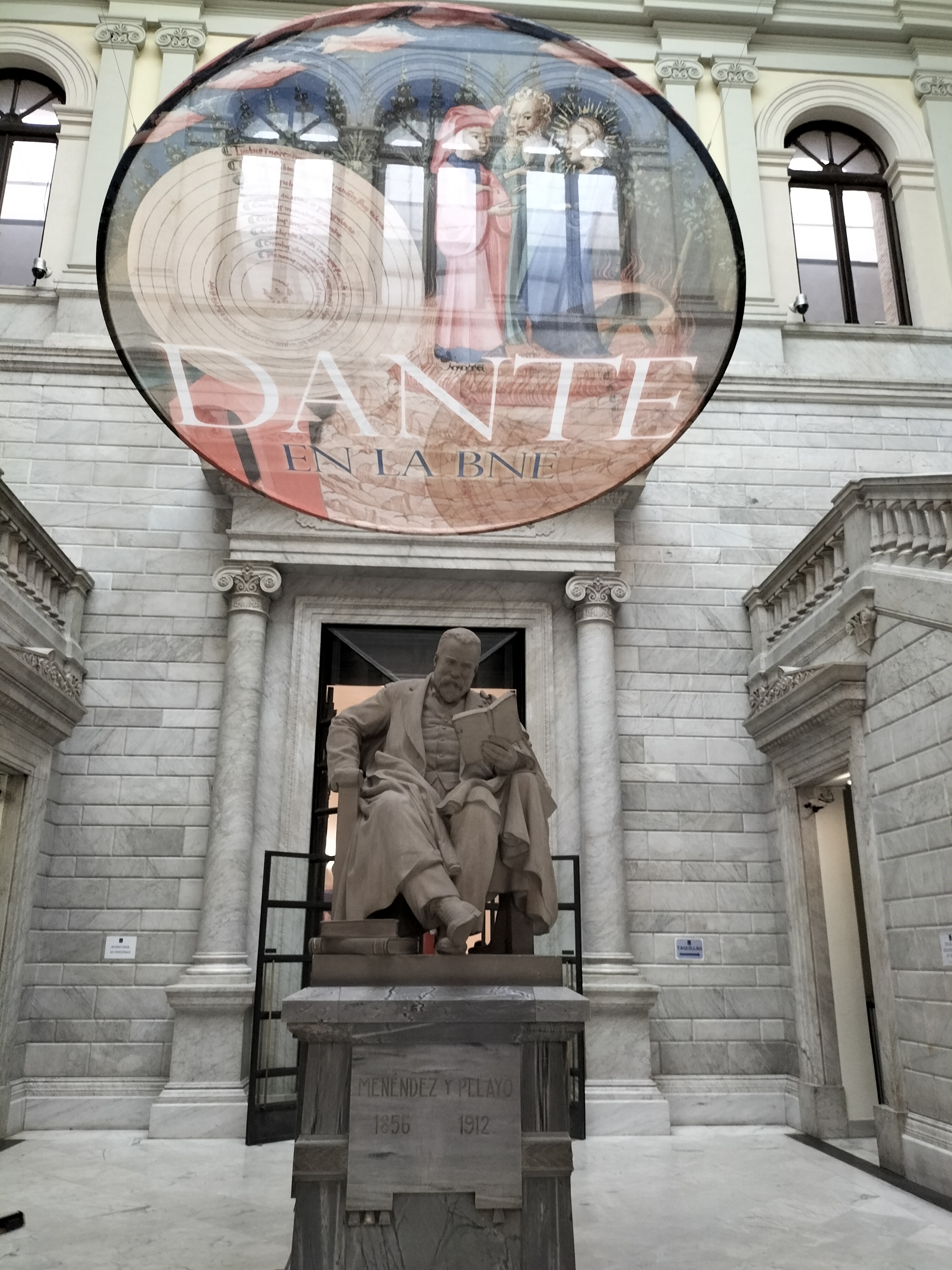
So many books, so little time!
Anyway, what was your favorite part of our visit?
And as always, if you like my writing, please check out (and tell someone about) my novels here.



6 comments
Skip to comment form
I hope you enjoy birding in all of those places!
Author
Thank you, Marilyn! Yes, birding is fun everywhere I go. 🙂
Great stuff! I am visiting Spain vicariously through your words and photos. Have fun exploring your new home.
Author
Thanks, Pat! Great to hear from you!
I am in awe of your discoveries & your ability to share it with us through your so readable narrative. Thanks.
Author
Thank you, Becky! Glad to have you reading my blog! Hugs!